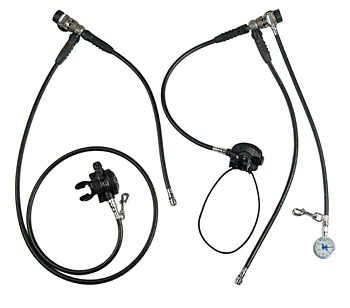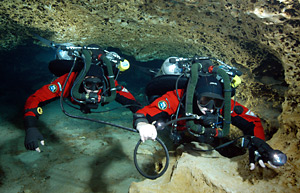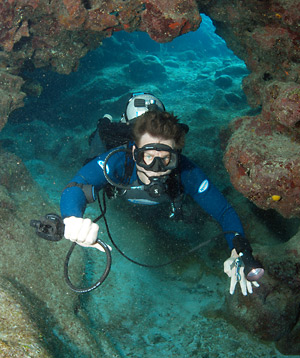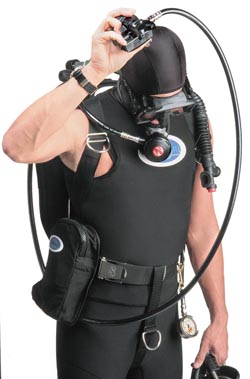I am contemplating going with long(er) hose system as I am switching to miflex hoses. I like the idea of having bit more distance in case of donation. For a single tank system, what lengths of hoses should I be looking at?
From
Equipment Configuration | Global Underwater Explorers which is definitely worth the read later......
"Hoses
Divers should use high quality hoses to reduce the risk of hose rupture, and hoses should be replaced every several years or when they begin to show wear. All hoses should be fitted with strain relief to reduce the risk of kinking and failure. While under pressure, divers should periodically pull the protector aside to ensure that there are no leaks or impending failures. Long hoses typically range from 5 to 7' (1.5- 2m). Shallow open water divers who do not use a long hose commonly use a standard 32 (12.6cm) hose. Overhead divers should use a 7' hose. Open water divers who use a long hose often use a 5 or 6' hose, depending on their size and the use of a hip-mounted canister.10


Restrictive areas, like caves, often require that divers travel single file. This means that unless divers are equipped with a long hose second stage, in the event of a failure, they will be unable to effectively share air in such an environment. The use of the long hose was primarily designed to manage air-sharing problems in restrictive areas, and has been a standard feature of cave diving for many years. Anytime divers are forced to travel while air sharing, using the long hose is mandatory. Furthermore, divers facing decompression will use a long hose. Today, many open water divers also choose the long hose because of the comfort it provides during air-sharing situations. Properly trained and equipped divers often dive with a long hose; this allows them greater flexibility while diving. The backup regulator hose should come across the diver's shoulder, allowing the regulator to sit below the chin without the hose bulging to the side.
Diving in a shallow, open water environment allows a diver direct ascent to the surface, thereby reducing air-sharing complications. In this case, divers will sometimes use shorter primary regulator hoses, an acceptable practice in this environment. Obviously, such an event is only for emergencies. Divers ascending from SCUBA on a breath-hold must exhale during the ascent to prevent embolism. This technique should be practiced and discussed during open water training.

Power inflator hoses should run over the diver's left shoulder and be long enough to comfortably supply the power inflator, while not so long that they bulge out to either side. In turn, the inflator itself should be long enough that, with one hand controlling all maneuvers, a diver is able to easily reach his/her mouth, his/her dry suit inflation valve, and his/her nose; it should also be long enough that, if necessary, one could breathe out of it by simultaneously holding down both buttons.13 The inflator from the wings runs over the shoulder and through a small bungie attached with the left chest D-ring. This keeps the inflator where it can be located instantly. To provide additional redundancy when using two first stages, the inflator hose should always be run from the right post. This requirement is illustrated in the case of a diver's left post rolling off or breaking. If the inflator is run from the left post, the diver will simultaneously lose not only the use of the backup regulator around the neck but also the ability to inflate the BC. These two problems together could be inordinately compounded by an out-of-air situation in which a diver would not only be without the means of controlling his/her buoyancy but would also be deprived of the use of a third regulator (cf. note 7). In addition, the inflator mechanism itself should not be designed to fill rapidly; this allows one to manage a runaway inflation more effectively, should an inflator failure cause a continual addition of air. The pressure gauge hose should run from the diver's left post to the left hip D-ring, where it is attached by a stainless steel clip wire-tied to the pressure gauge. This pressure gauge does not need a protective boot, nor does it need to be in a console or in any other device that increases its size and/or entanglement potential. The hose should be short enough to stay out of the slipstream and long enough to allow for viewing of the gauge once it is unclipped from the D-ring....."










